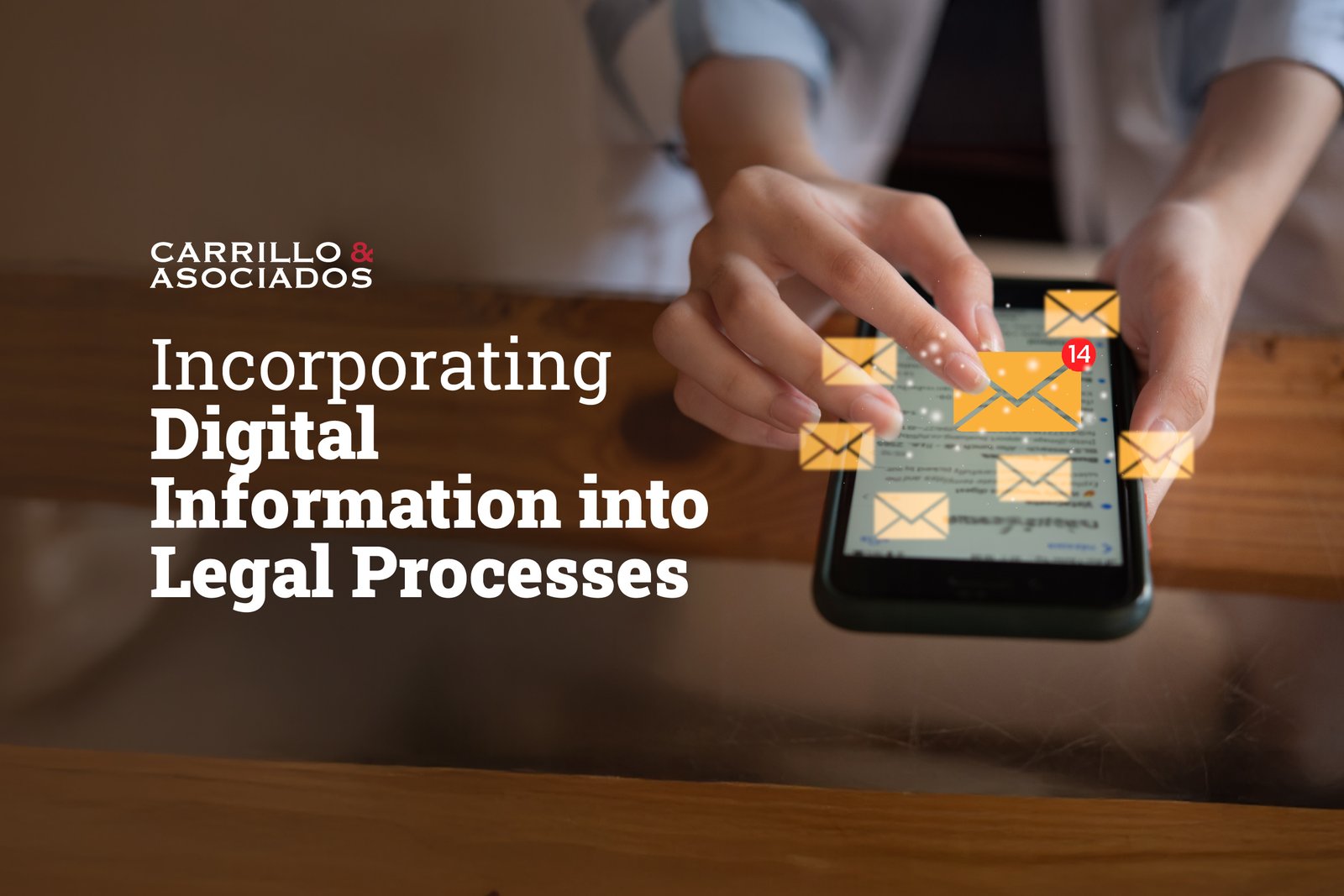
On average, a person receives 117 emails and 153 instant messages during their work day. That means workers get interrupted every two minutes. These numbers come from Microsoft's Global Work Trend Index Special Report and they are just one example of the work dynamics of today's world. We live in a hyperconnected environment where the exchange of information via digital media and data messages is becoming increasingly common.
Online connectivity has facilitated communication on both a personal and professional level, but if we look at it from a risk perspective, these interactions and exchanges could become evidence in legal proceedings.
As stated in the preamble to Guatemala's Law on the Recognition of Electronic Communications and Signatures,, passed in 2008, "(...) the massive immersion of technology in our society is a reality that we cannot ignore, and therefore traditional concepts and visions of the physical world must be revised to adapt them to the current context of the digital world."
So how has this digitalization impacted legal practice by using these exchanges as evidence in legal proceedings?
Evidence in Legal Proceedings
In general, electronic communications are admissible as evidence in Guatemala, and it is in the procedures for acquisition and preservation for their admission that different criteria and discretion on the part of the authorities are found.
For example, in a criminal investigation, a judge may request that certain electronic devices be seized so that an expert can extract the data, analyze it, and present the results related to the case. The judge's authorization is essential, since without it, the evidence presented could be rejected for violating Article 24 of the Constitution[1].
This also applies in other areas. Suppose a landlord and tenant agree on a monthly payment for rent and utilities and exchange copies of personal documents or bank accounts via WhatsApp chat. If the agreement is not honored, they could end up in civil court. In that case, the judge could accept those conversations as evidence that a verbal contract had been made between the two parties, which could have the same validity as a formal written one. Therefore, it would have to be complied with, and the way in which such information is presented would be evaluated.
From Digital to Analog
When we think about digital technology, we tend to visualize a device and its content displayed on a screen, but what is usually presented to a judge in Guatemala is an expert report or a printout of a conversation accompanied by a notarized document confirming that the information presented is real and has not been modified. Even the Criminal Procedure Code states that the form of incorporation of evidence into the proceedings "shall be adapted to the most analogous means of evidence provided for, as far as possible" (article 185).
But beyond the format submitted to the judge, when we talk about presenting material evidence extracted from digital devices and information systems, it is essential to maintain a properly documented process to ensure its authenticity.
For example, if digital information was extracted from a computer and stored on a hard drive, it is important that this procedure be performed by an expert using the appropriate tools, and that the entire process be documented. This will subsequently serve to substantiate that the information presented in physical and/or digital form before the various authorities correspond to the original extracted from the servers and is available for further use.
International Standards
Unlike what we are currently experiencing in Guatemala, in countries like the United States, digital experts and lawyers have agreed on a procedure for managing digital information in legal proceedings, preserving it properly, and making it accessible for later consultation. This has been regulated through procedural rules and federal laws that refer to the handling of electronic information in litigation.
To do this, they use programs that generate forensic images, which in turn create digital keys that guarantee the authenticity of the content. Thus, when it is necessary to extract information for a proceeding, it is accompanied by a validation certificate generated by the platform itself.
Subsequently, this information is sent to the respective authorities through experts and specialists who preserved the information. The expert must be certified in the use of the hardware and software used so that there are no doubts about the process followed and the material presented to the judge.
Digital media has allowed us to work remotely, make video calls with loved ones who are thousands of miles away, and make purchases with just a few clicks. This shows that technology, when used well, is a great ally. But it also reminds us that actions have consequences. Therefore, always remember that what is said in a message, an email, or posted online could be used in the future as decisive evidence to resolve a legal situation.
If you are facing a legal situation and want to provide digital evidence, we recommend that you follow international standards and hire an expert certified in the use of electronic tools for collecting digital evidence. This will give greater certainty to the information when presenting it to a judge or other authority.
If you have any questions, please do not hesitate to contact us.


Partner
IT Expert
[1] Article 24 of the Constitution guarantees the secrecy of correspondence and of telephone, radio, cable, and other modern technology communications. Therefore, it is recognized that the correspondence of every person, their documents, and books are inviolable and may only be reviewed or seized by virtue of a final decision issued by a competent judge.